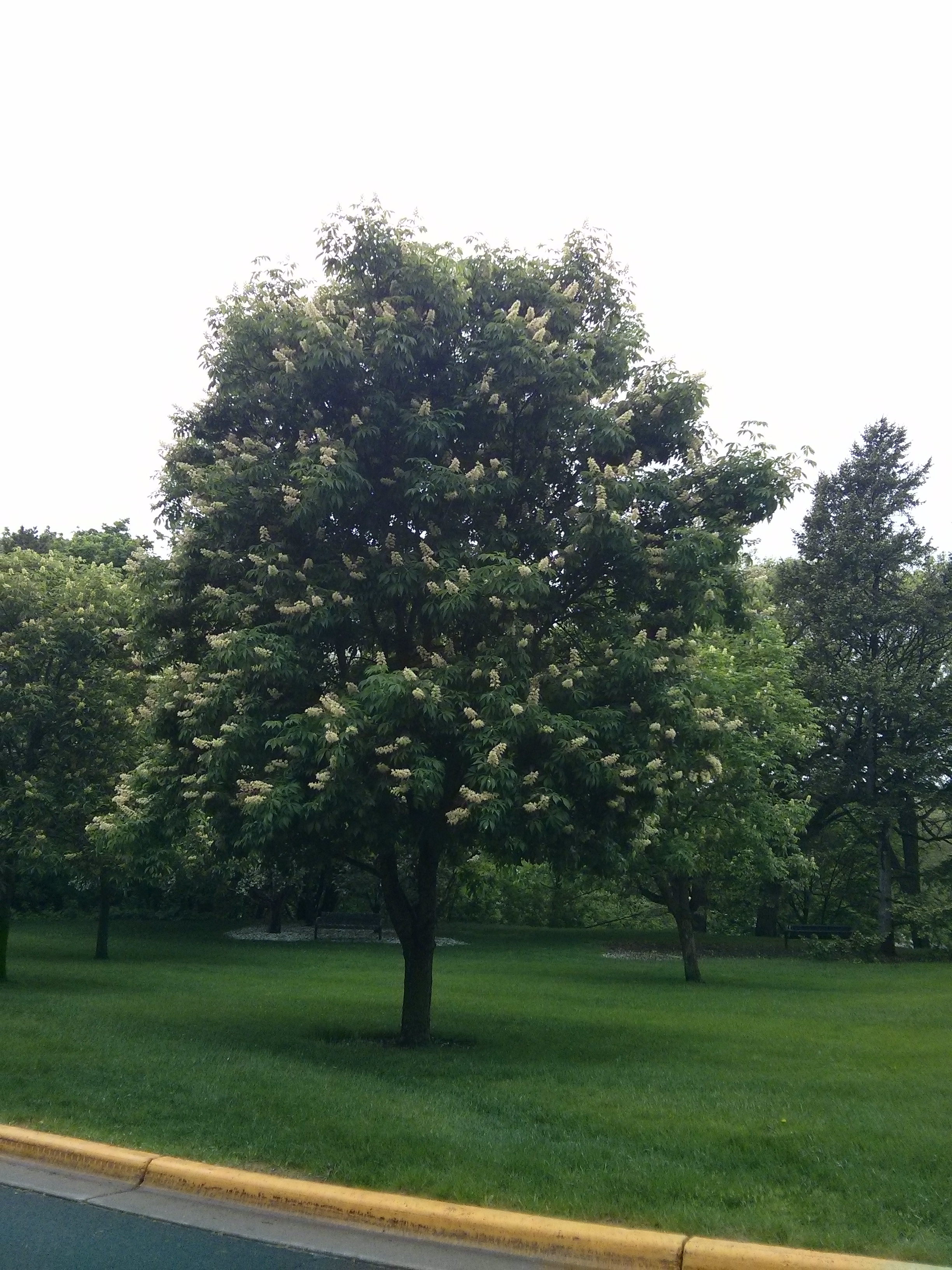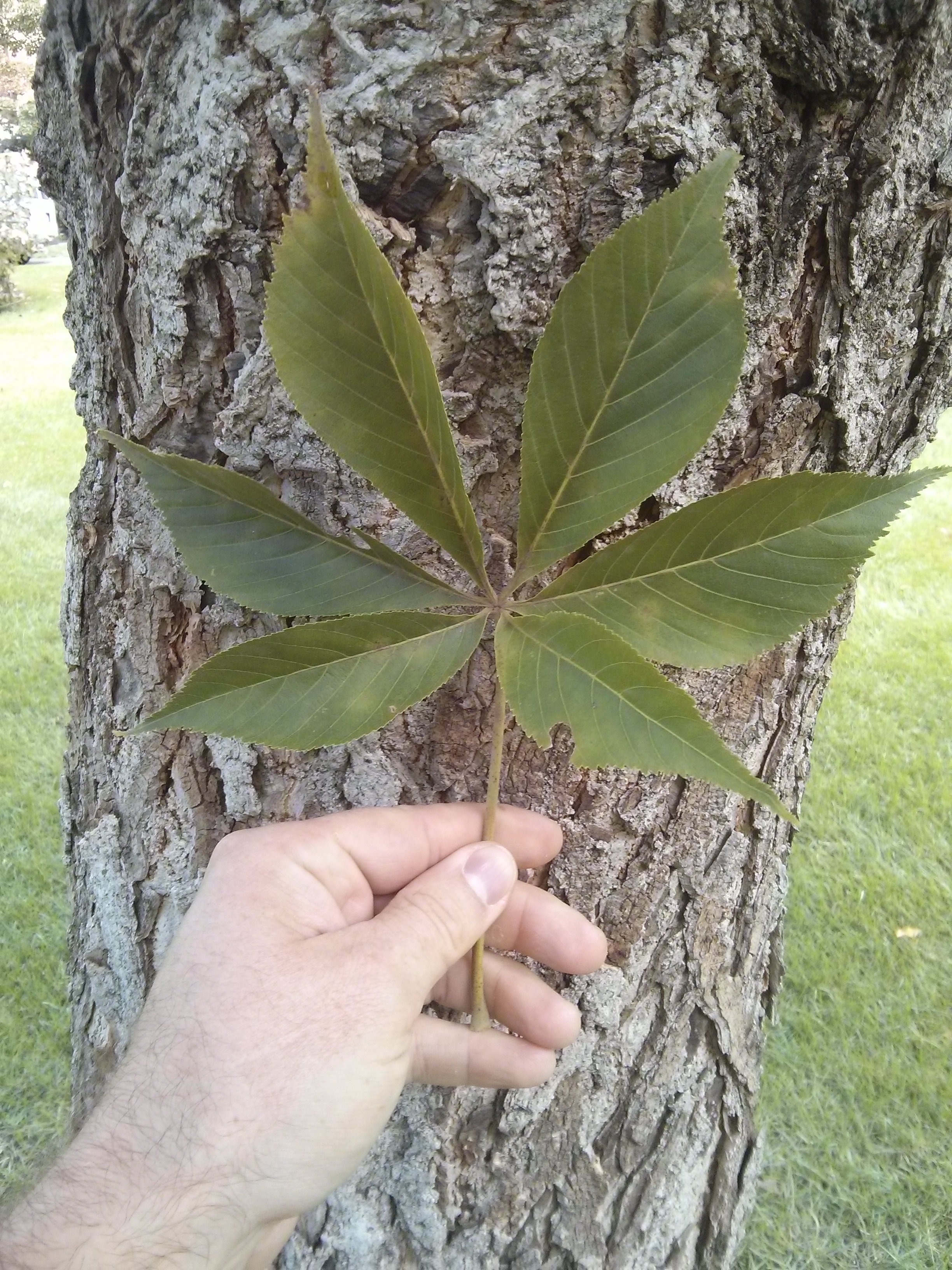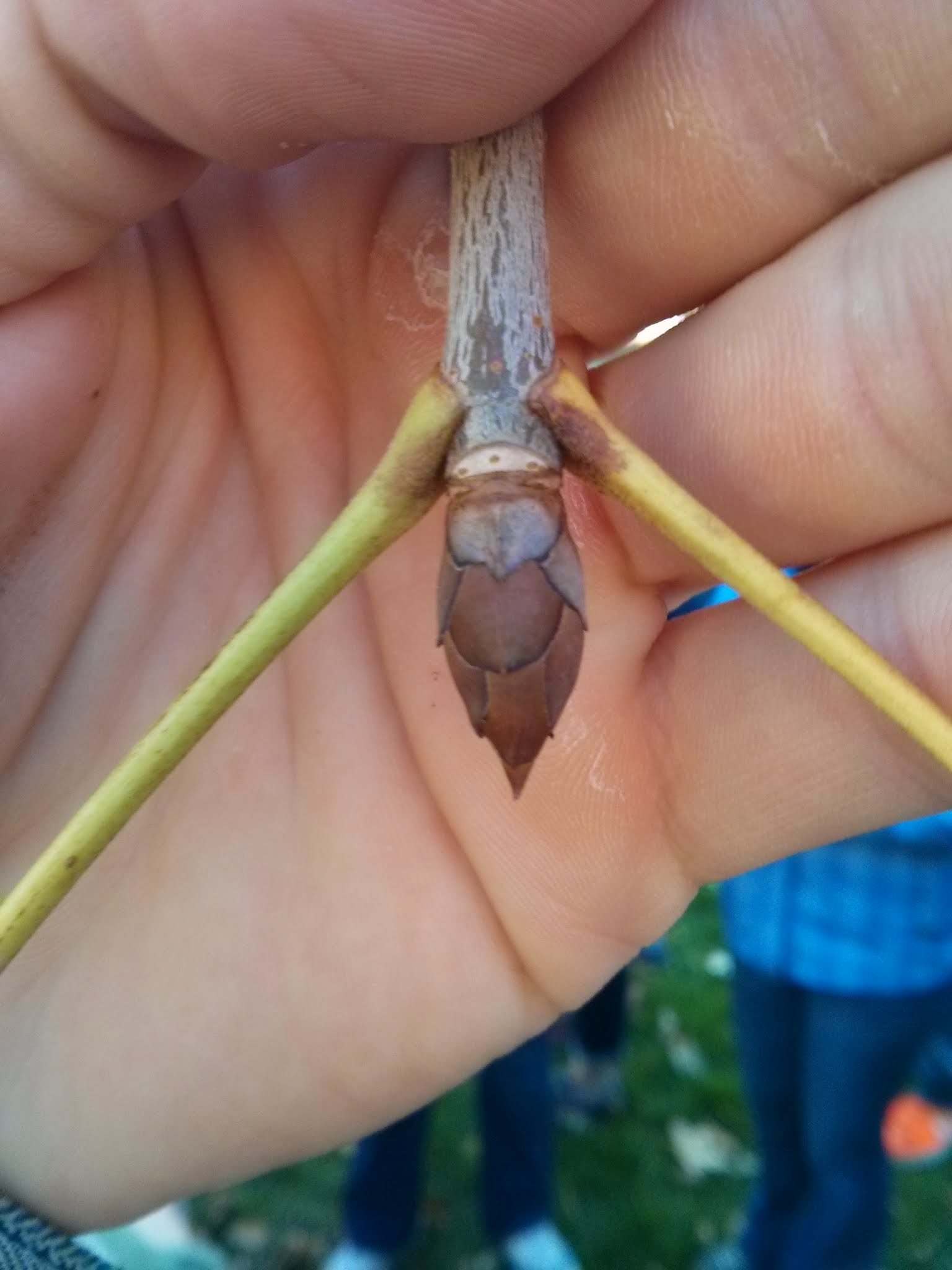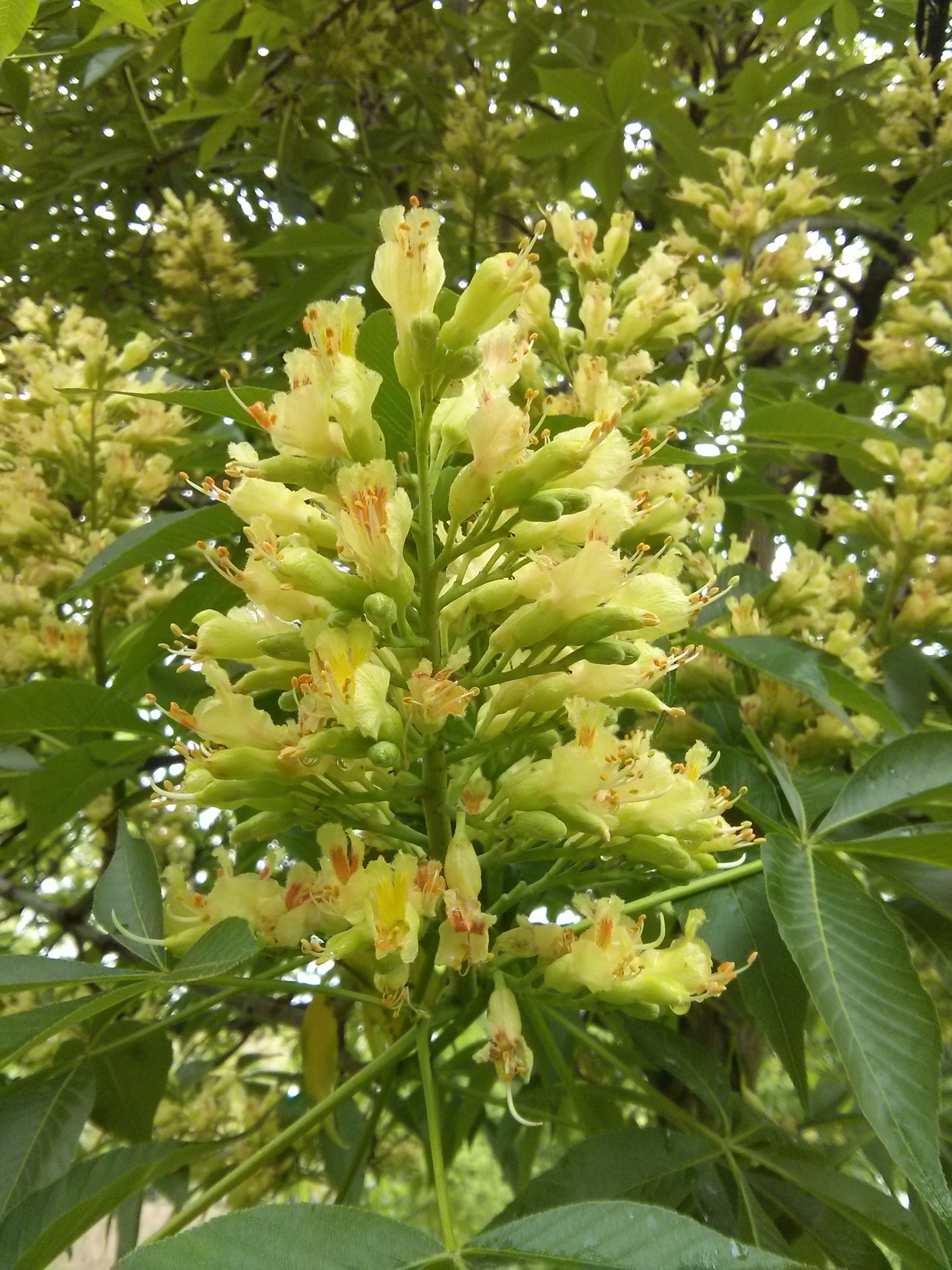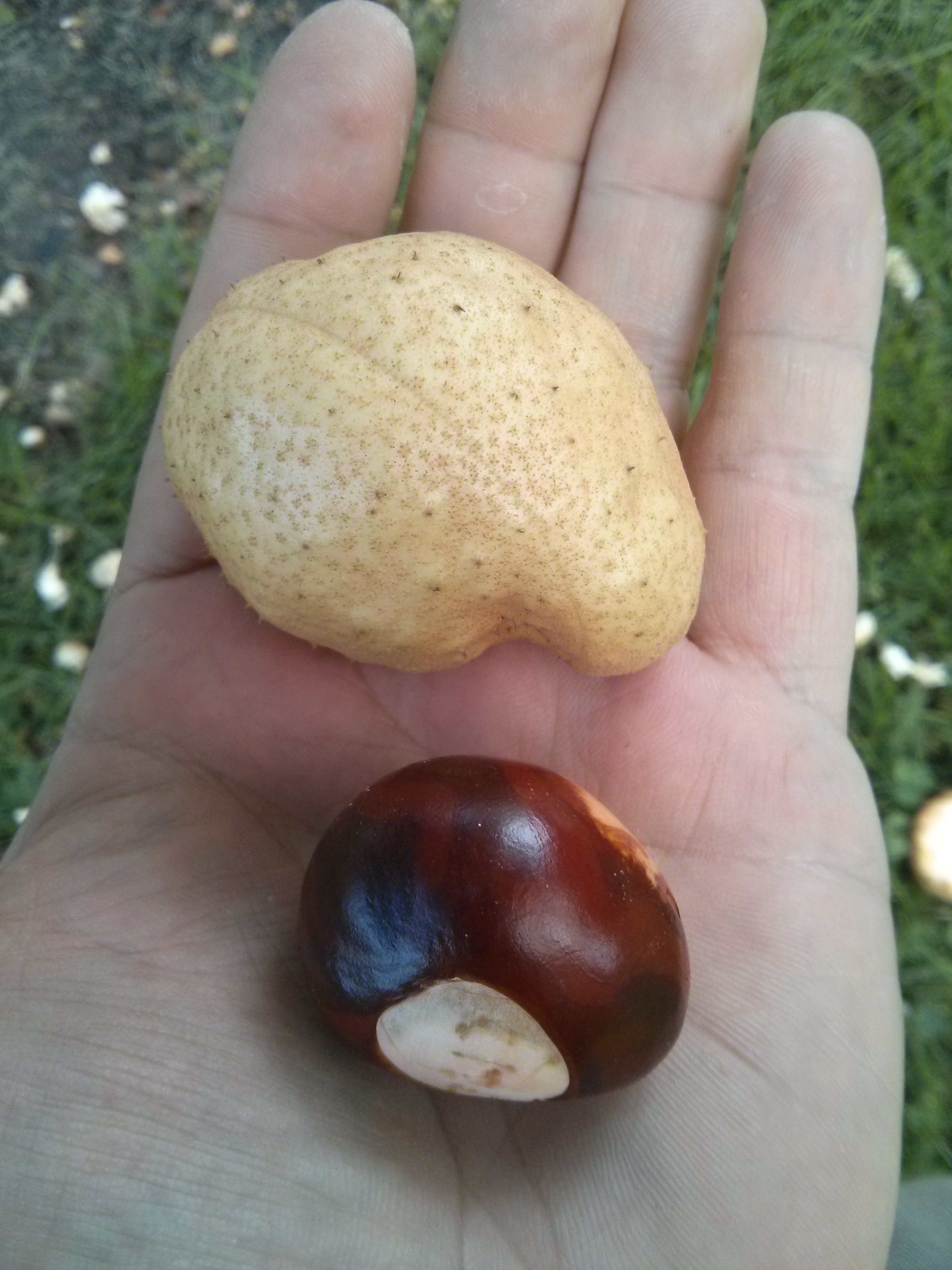Common Name: Ohio buckeye
Scientific Name:
Family: Sapindaceae
Genus: Aesculus
Species: A. glabra
Hardiness Zone: 3 to 7
Height: 20 to 40 ft
Width: 20 to 40 ft
Common characteristics:
The Ohio buckeye can be a very large tree if grown in the open. The bark becomes rough with a shallow, wrinkly gray-brown ridge pattern. Older bark is rough with shallow longitudinal ridges. Their trunks are typically 10 to 16 inches in diameter in Minnesota. The branches and twigs are very stout, especially on full sun specimens. Terminal buds are very large, usually 1.5” long. The bud scales are also egg-shaped with pointed tips and are dull, light brown colored. Leaves grow oppositely on the stem. They are palmately compound with 5 to 7 leaflets per leaf. These leaves at the branch tips can be tightly clustered nearly appearing whorled. The leaflets are elliptical and are finely serrated around the margin. The upper surface is hairless and bright green and the lower surface is paler in color with tufts of hair in the venation. Its fall color is gold to red-orange, though leaves often fall off the tree early due to foliar leaf spot diseases and leaf scorch. The leaf scars on the buckeyes have the appearance of a smiley-faced with three conspicuous vascular bundle scars. Flowers are large often 12” long and are very showy upright terminal clusters of yellow-green flowers that develop in early spring. The buckeye fruit is a fleshy, globular capsule about 1.5” to 2” in diameter. It is a golden brown with a leathery surface that is covered in short spines. Each capsule will contain between 1 and 3 nuts that are rather large and have a shiny, dark reddish-brown color with a large, pale, circular "eye".
Where it grows:
Prefers acidic, moist, well-drained soil. It will tolerate occasional droughts, alkaline soil, and wet and dry sites. Best in full sun to partial shade
How it’s used:
Often used as a shade or ornamental tree in the landscape. It is not recommended to plant this tree on boulevards due to its large seed.
Ecosystem services:
Squirrels love the nut, burying it widely and volunteer saplings are typically common in lawn edges, gardens and woodline edges near a parent tree.
Where it is native to:
The Ohio Buckeye is to the eastern United States and into Minnesota, Iowa, and Nebraska.
Known Varieties and Their Traits:
Early Glow™ Ohio buckeye (Aesculus glabra 'J.N. Select'): A cultivar with superior resistance to leaf blotch, leaf scorch and powdery mildew. Reliable red fall color and low fruit production. A Chicagoland Grows™ introduction. Availability may be limited.
Problems:
The buckeye is susceptible to leaf blotch, powdery mildew, and infestation by insects such as scale and Japanese beetles.
References:
